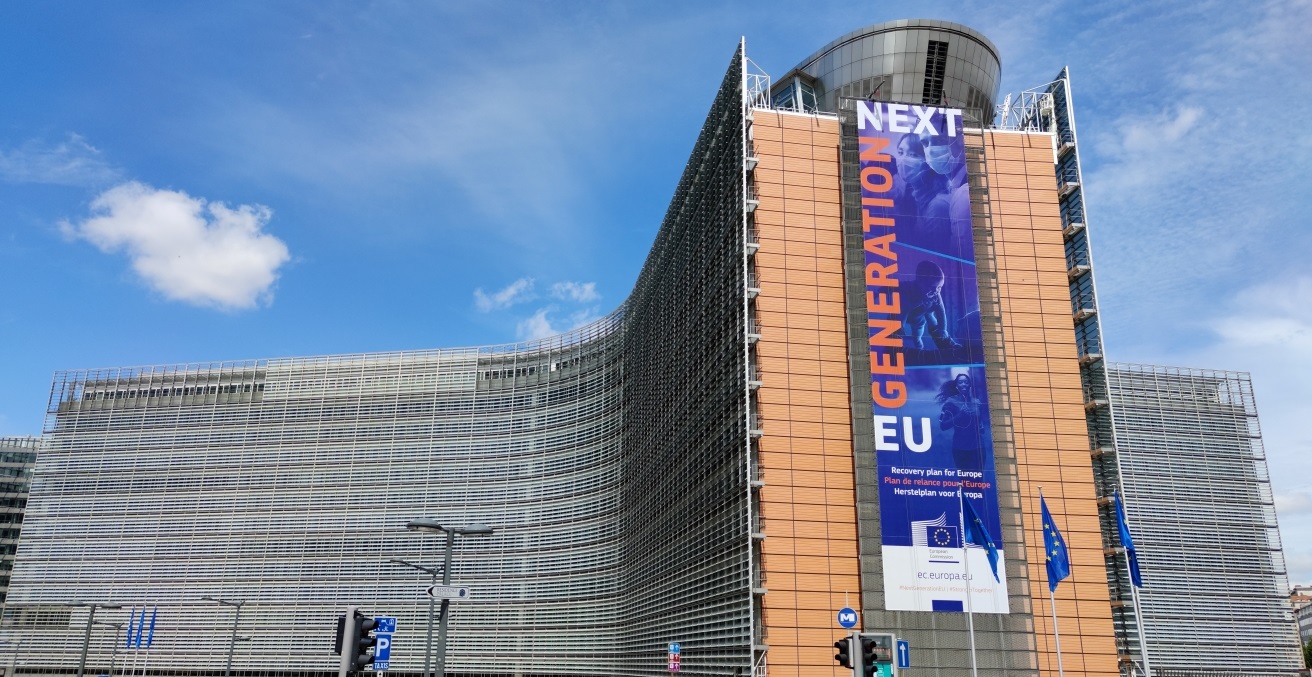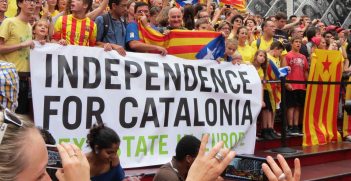The EU Coronavirus Recovery: Between Political Realities and "Next Generation" Aspirations

After the second longest negotiations in EU history, the European Council reached a political agreement on the €750 billion coronavirus recovery package, nearly doubling the size of the new EU budget. It remains to be seen whether this deal lives up to its aspirations or is just business as usual for the EU.
The agreed deal contains two major components: the regular EU budget, which is planned on a seven-year basis through a Multiannual Financial Framework (MFF) of €1.0743 trillion for 2021-2027, and an additional €750 billion rescue package as the New Generation EU (NGEU), totalling €1.8243 trillion. This is an important step forward for the EU as it not only significantly increases its budget from €160 billion to €250 billion per year, but also provides new avenues for raising revenues at the EU level.
Unlike central governments in federal states, the EU cannot raise its own revenues and instead mostly relies upon the financial contributions by the member states. Although an economic giant, the EU is, in effect, a fiscal dwarf. For example, the French budget amounts to 7-8 percent of its Gross National Income (GNI), while the EU’s budget is only 1.24 percent of the GNI of the 27 member states. As the member states expect the EU to play a bigger role in internal and external affairs, the EU is deprived of much-needed financial means. To some extent, this package changes the picture, albeit imperfectly.
How will the money be raised and spent?
The European Commission is called upon to raise €750 billion by borrowing on the capital markets with the goal of repaying the debt by the end of 2058. The EU’s AAA credit rating will secure low borrowing costs, in contrast to higher costs that would be incurred by the majority of the member states. While this is solidarity in action, the EU will be significantly indebted over the next 30 years.
To borrow the money, the member states must empower the Commission through a mechanism called the “Own Resources Decision.” The procedure entails unanimous agreement by the Council of Ministers, the co-legislative body of the EU, and the ratification by the member states’ national parliaments.
The EU must also be empowered to raise new revenues in order to repay the debt. The heads of member states have agreed that this could be done through a range of new, and so far controversial, taxes and fiscal arrangements. However, the agreement does not specify which new financial mechanisms would be introduced and when.
Of the amount borrowed by the Commission, €390 billion will be distributed to the member states through grants and €360 billion will be distributed as loans. The proportion of the funds assigned to each member state was determined according to their needs, taking into account the extent of the impact of the coronavirus crisis. For example, Italy will receive €209 billion, France €40 billion, Croatia €22 billion, and so on. In order to access these funds, the member states are required to deliver national plans to the Council of Ministers. To be approved, these national plans must align with the EU’s political vision of structural reforms, including digitalisation and climate neutrality. In addition, the plans must be compatible with the European Commission’s recommendations issued in the framework of the European Semester, which coordinates economic policies across the EU and ensures budgetary and fiscal discipline.
The Council will adopt the plans by a qualified majority voting (55 percent of the member states; 65 percent of the European population). Based on the approved national plans, 70 percent of the NGEU funds will be available immediately in 2021, and an additional 30 percent in 2023.
From green to “greenish” economy
Climate action remains one of the key components of expenditure. It has been agreed that at least 30 percent of the total amount of the budget and the NGEU, €600 billion over seven years, will be streamlined into “climate action.” The 2050 carbon neutrality objective has been endorsed by all member states, including climate sceptics like Poland, albeit with watered down conditions for accessing funds. However, neutrality is a narrower concept than the “green economy” which encompasses both circular economy and the conservation of ecosystems. In addition, compared to the initial Commission’s NGEU proposal, the Just Transition Fund, a financial mechanism supporting the energy transition, has been slashed from €40 billion to €17.5 billion. This fund is particularly important for Central European countries whose energy production relies on coal.
Earlier this year, in carving out its “Green Deal,” the Commission estimated that Europe would require investments of at least €1 trillion – €260 billion per year – to reach the current 2030 climate and energy targets. The new €85 billion per year figure will fall short in reaching this target.
A road ahead encumbered with political uncertainties
The powers to approve new resources and the national plans lie primarily with the Member States. Since States remain in the front seat, there is more rather than less politics. In addition, the inter-institutional balance in the EU compounds the political complexity of the entire deal.
The Commission’s role is to scrutinise the plans’ compliance with its vision of fiscal and economic reforms in both the adoption and implementation phases. The European Parliament does not have authority with respect to NGEU but remains a powerful broker in adopting the new MFF, which must be approved by December. The European Parliament has already expressed its concerns regarding the limited funds for individual programs, in particular for research and the climate agenda, and the ambiguity around the rule of law conditionality.
Assuming that all member states ratify the NGEU arrangement by the end of this year, EU borrowing on the capital markets should not be a problem. Even the approval of national rescue plans could go fast. The main medium-term political issue will be the creation of new fiscal arrangements aimed at increasing EU revenues for the debt repayment. This will require a unanimous decision from the Council of Ministers, which could prove problematic. For instance, Ireland has so far adamantly opposed the introduction of a new digital tax. In addition, since all member states must also ratify the new resources mechanism, there is a risk that the plan could fail even if one national parliament opposes the new fiscal arrangements. Where resources are not agreed through new financial instruments, such as digital or carbon tax, member states will have to foot the bill.
Winners and losers
At the outset, the four “frugals” (Sweden, the Netherlands, Denmark, and Austria) opposed the idea of solidarity through transfers. Their requests were partially satisfied by the readjustments between loans and grants, and large rebates on their contributions to the EU budget. For example, Austria obtained a 138 percent rebate. However, this means that the largest recipients of the NGEU will also have to contribute more to the EU budget.
The “frugals” have not succeeded in obtaining a veto power on neither the plans nor their implementation. Therefore, compared to the 2010 bailouts of Cyprus and Greece, which placed the bailed states at the mercy of the Troika, the situation now is very different. However, a number of issues remain ambiguous, such as the rule of law conditionality targeted at Hungary and Poland.
Finally, a number of EU funds such as research, health, climate, and support for companies in distress are the biggest losers. To efficiently tackle challenges such as migration, climate change, and digitalisation, the EU’s own resources should amount to at least 2.5 percent of the EU GNP. With less rather than more financial power, the Commission will also face more obstacles in realising its vision of stronger geopolitical Europe.
“There is no such thing as a perfect world, but we have made progress” said French President Emmanuel Macron, following the marathon negotiations. The achieved deal has exposed deep divisions across the EU. Nevertheless, the new deal has also reaffirmed that the Franco-German partnership will be the strong pillar for Next Generation Europe.
Despite the disagreements, the EU is moving toward a union of fiscal transfer. The European Commission will for the first time borrow large sums of money on the capital markets. The long-term achievement of a quasi-federation requires common policies as well as fiscal transfers in order to support the periphery that is lagging behind. History has shown that the European construction is an accumulation of small steps. Next Generation EU is one such step, albeit an imperfect one.
Ivana Damjanovic is an assistant lecturer at the University of Canberra and a PhD candidate at the Australian National University
Nicolas de Sadeleer is a professor of law and a Jean Monnet Chair at the University of Saint Louis, Brussels
This article is published under a Creative Commons License and may be republished with attribution.





